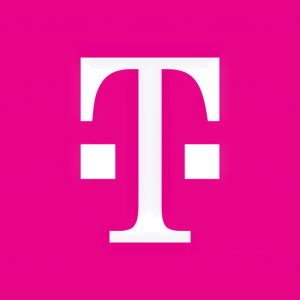T-Mobile Releases 2021 Scam and Robocall Report
T-Mobile's 2021 Scam and Robocall Report reveals a staggering 116% increase in scam attempts, with over 21 billion scam calls identified or blocked—around 700 calls per second. The growing threat of scams led to a predicted loss of $29.8 billion for U.S. wireless customers this year. T-Mobile's Scam Shield not only outperformed competitors, identifying 3.5 times more scam calls than AT&T's solution but also achieved a 99% accuracy rate in labeling calls as "Scam Likely." This robust protection positions T-Mobile as a leader in consumer safety against scams.
- Identified or blocked over 21 billion scam calls, averaging 700 calls per second.
- Scam Shield's accuracy in labeling 'Scam Likely' calls exceeds 99%.
- Outperformed competitors by blocking 3.5 times more scam calls than AT&T.
- Scam attempts increased by 116% in 2021, indicating a growing risk environment.
New network data shows over
What’s the news: T-Mobile released its 2021 year-end report on Scams and Robocalls and T-Mobile Scam Shield identified or blocked over 21 billion scam calls — that’s 700 calls identified or blocked as Scam Likely every second — in 2021. Overall, scam attempts increased by
Why it matters: Scammers and spammers worked harder than ever in 2021 as scam calls continue to be the number one complaint to the
Who it’s for: Anyone looking to better protect themselves and their families against scammers.

Report data is determined by extrapolating from T-Mobile network and partners covering
“Attempted scam calls hit record highs in 2021, but with Scam Shield we identified or blocked over 21 billion calls this year — or 700 calls per second! — for customers. We are the only provider protecting every single customer, regardless of their plan or device,” said
The Un-carrier Leads, the Carriers Follow
In
While others play follow the leader, the Un-carrier blazes ahead, adding improved Scam Reporting and eSIM support in the Scam Shield app, as well as new patented network tools to identify and block likely scam attempts. The T-Mobile network analyzes billions of calls every second, updating in real time, 24/7 to keep customers protected. And all those new tools and data helped T-Mobile deliver today’s new insights into scammer behaviors.
Report data is determined by extrapolating from T-Mobile network and partners covering
- Scam calls reached record highs in 2021. After months of quarantine shutdown for many scammer operations in 2020, scammers came back in full force in 2021 and continued to get more aggressive as the year progressed.
-
Scam volume doubled in 2021. The lowest measured month for scam traffic was
January 2021 , identifying 1.1 billion calls as Scam Likely. By November, volume had increased exponentially, and T-Mobile identified double the January traffic at 2.5 billion calls as Scam Likely. -
Scammers take it easy on the weekends. The T-Mobile network tracked about an
85% drop in calls identified as Scam Likely from Monday-Friday to over the weekends! -
Scammers are posing as businesses in large volumes. In terms of volume, the number one scam attempt in 2021 was related to fake vehicle warranties with over
51% of the measured volume. Other top scam attempts included pretending to be with theSocial Security office (10% ), wireless provider (9% ), car insurance company (6% ), or package delivery (4% ). Scammers were also posing as health insurance or health providers, theIRS , or credit card companies. -
Scammers enjoy holiday down time. This year,
April 4 (Easter and a Sunday), had the lowest scam volume of the year. And while the six weeks leading up to Christmas are historically the busiest time of the year for scam volume, call volume typically drops off sharply startingDecember 23 . -
Scammers target some areas of the
USA more than others.Texas ,Florida ,Arizona andGeorgia had the highest volume of calls identified as Scam Likely. The top metro area wasDallas/Fort Worth with the 214, 832, 210 and 817 area codes being the top four targeted in the country.
Protect Yourself and Your Family
T-Mobile’s powerful suite of protection technologies includes:
- Using AI, machine learning and patented technologies, T-Mobile analyzes call behavior to protect customers around the clock, responding to new threats and updating protections every six minutes.
- “Scam Likely” warnings automatically appear for every customer when a scam threat is detected.
- Turn on Scam Block to stop Scam Likely calls at the network level. With Scam Block turned on, Scam Likely calls won’t even ring through to your phone. To turn on Scam Block simply activate in the Scam Shield app or dial #662# from your T-Mobile phone.
- Free Caller ID to every customer – a first and only offering from a major wireless provider – so Un-carrier customers can always get information on who is calling, even if they aren’t saved in your contacts.
- STIR/SHAKEN call verification so every Un-carrier customer has the ability to see when a call has been authenticated by the T-Mobile network. When you see the verification, you can rest easy knowing the number on the display has not been spoofed by a scammer.
T-Mobile and Metro by T-Mobile customers can download the Scam Shield app on the
For more information on Scam Shield, check out https://www.t-mobile.com/customers/scam-shield.
Follow T-Mobile’s Official Twitter Newsroom @TMobileNews to stay up to date with the latest company news.
Turning on Scam Block might block calls you want; disable any time. STIR/SHAKEN verification requires eligible device with display capability. Report data is determined by extrapolating from T-Mobile network and partners covering
About T-Mobile
View source version on businesswire.com: https://www.businesswire.com/news/home/20211219005134/en/
Media Contacts
MediaRelations@t-mobile.com
Investor Relations Contact
investor.relations@t-mobile.com
https://investor.t-mobile.com
Source: T-Mobile
FAQ
What were the findings of T-Mobile's 2021 Scam Report?
How effective is T-Mobile's Scam Shield?
What financial impact did scam calls have in 2021?
How does T-Mobile's scam protection compare to competitors?







